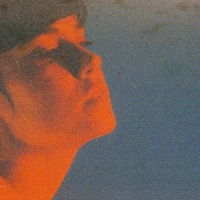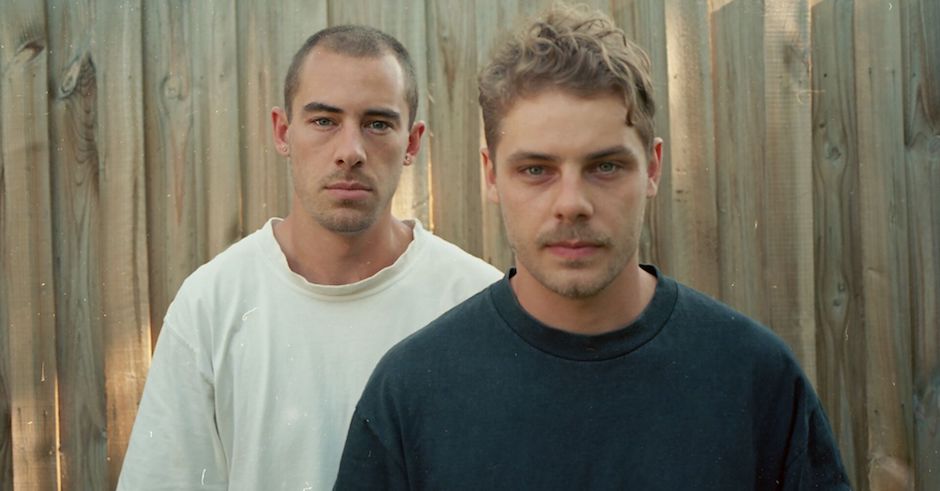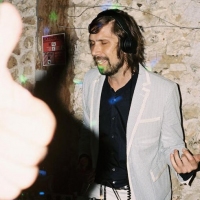 Introducing Exhibitionist, and her beguiling debut single, HandsA new member to the TEEF family, and an immensely exciting one at that.
Introducing Exhibitionist, and her beguiling debut single, HandsA new member to the TEEF family, and an immensely exciting one at that.

Talking music and art with Future Classic's Thrupence
The Melbourne-based multi-instrumentalist's debut album is out today.
It's been an interesting past few years for Melbourne-based musician and multi-instrumentalist Thrupence. Despite having signed to Future Classic in mid-2014, Thrupence - real name Jack Vanzet - has largely kept his music project away from the limelight, instead choosing to quietly upload his expansive, instrumental mixtapes to his Bandcamp. It was here that the Thrupence project really developed and grew, with Vanzet slowly piecing together sounds and tones that would eventually come together in Ideas of Aesthetics, his debut record.
Across its short, 35-minute duration, Ideas Of Aesthetics balances beautifully-crafted, soft instrumentals with more traditional, electronic-leaning singles like Atmos and Rinse Repeat, with guest vocalists including fellow Future Classic star Wafia and brother Edward Vanzet stepping up to the plate alongside the seasoned producer. Despite the changes of settings and tones across the album's duration, one thing that carries across the entirety of the record is Thrupence's remarkable perfectionism. Whether it is the mellow, piano-soaked instrumentals of Honesty or the album-closing Acacia Road, or the previously-mentioned, more accessible electronic-leaning singles, every single track on Ideas Of Aesthetics is perfect in its tone, design and textures, luring you in with its captivating sounds that will captivate and charm you until the muffled, closing bars of Acacia Road draw the album to a close.
Celebrating the album's release, we managed to quickly catch up with Thrupence to talk about Ideas of Aesthetics, as well as his graphic design work (you may recognise one of his prints as the sensational album artwork for RÜFÜS' Bloom and accompanying singles), and the possible return of Thrupence as a live act:
Hey man, first off I just wanted to say a massive congratulations in advance on the release of Ideas of Aesthetics – how long has it taken to build the album into its final, released form?
Hey thanks very much. The album was written on and off over a 5-6 year period.
For a while, you stopped making music and performing to refocus on your graphic design work and art – right? After releasing a few mixtapes on Bandcamp was there anything that made you decide to bite the bullet and start work on a full-length album?
I didn't really stop making music - I just stopped making it my main priority for a time. There was a time where I wanted to be a professional musician and I'd do anything I could to try and achieve that goal. I was making music everyday and trying to learn and grow. It was really hard and I stopped enjoying the process and music in general - it wasn't healthy. I learnt that going all out like that wasn't for me and in a strange turn of events I've probably been more productive since then musically.
I didn't have an album light-bulb moment and say "I'm going to write 9 songs and package it as an album". It was more a collective process in which I would put aside tracks that I thought were more engaging than others over a long period of time.
Can you give us some insight into how the album was made?
Because it was made over such a long period the tracks were made all over the place. Some were made at my parent's farm, and others at different houses I lived at over that time. I've lived in 4 different houses over 4 years - I there's a song for each house.
I'm not a traditional player of any instrument - more a cutter and paster. Recording small loops and chord progressions and building layer upon layer. I'm trying to become a better keys player so as to create music that is more performance based but Ideas of Aesthetics was written in very much a step by step, layer by layer process.
The album includes guest vocal features from your brother Edward Vanzet and fellow Future Classic signee Wafia – which is the first time you’ve used guest vocalists before. How did the collaborations with Edward and Wafia come about and why did you choose to enlist vocalists for Ideas of Aesthetics?
I've worked with vocalists in the past but not for my own music. In 2015, Wafia hit me up about helping her write her first EP. That was a really natural process and a great experience - we're now great mates. She heard the production for the track we worked on and offered to return the favour. Regarding Ned - he also makes music and we've always jammed together but never put any music out. Conversations is the first track we've actually released. We're working on some other stuff as well. Hopefully we can put together a package of songs over the next 12 months or so.
You mention that the album started as a soundtrack to an imaginary film. How does starting and building a record around a theme like that impact the way a record is made for you?
The theme for the album has changed a bunch of times. For a time it was a movie soundtrack but then evolved into something else. It was hard to see any cohesion in the albums narrative until about 6 months ago when we started mixing. The concept of the album has coincidentally evolved to become about the passing of time. This inspired the artworks well. The cover is made from an ancient hand axe and the single art have similar references to time and it's impact on the creative process.

Aside from your work as Thrupence, you’re also an incredible artist and graphic designer under your real name Jack Vanzet – does your visual art, or visual art in a more general sense, influence your music? How so?
Kind of you to say. It's a weird thing. Some days it seems that the two are connected seamlessly and inspire one another. On other days I feel like they couldn't be further apart creatively. I get asked that a lot and I think I've answered it differently each time. I don't have a consistent train of thought for the topic. I think that's important though - if I understood the process I don't think it would be interesting. It's the uncertainty and the process of trying to understand that keeps it interesting.
On the topic of art, the album artwork for Ideas of Aesthetics is self-made. How do you approach designing cover arts for yourself and fellow musicians like RÜFÜS and Mansionair? How do you connect the music with the cover art?
I try to keep my own covers different. I'm very wary to not make other artists covers too much like my own. There are some visual elements that I want to keep for myself. I've always tried to keep the Thrupence art as an experiment for myself. I always want to feel like it's something new and something I haven't tried before. For instance, the Ideas of Aesthetics artwork package is all photography (something I'm not very familiar with). I think the project always needs to feel like its a tool for learning and expanding. Whereas art for clients is usually more an exercise that involves tools and methods that I know and have already developed.
Finally - you haven’t performed live for quite a while now, are you working on touring a live show in support of the album? If so, can you go into some detail about what your plans are / what to expect from a Thrupence live show?
Live shows have never been a big part of the project - but I'd love to try and give the sound some kind of physical presence - whether that's a live show or something, I'm not sure. Watch this space.
 Introducing Exhibitionist, and her beguiling debut single, HandsA new member to the TEEF family, and an immensely exciting one at that.
Introducing Exhibitionist, and her beguiling debut single, HandsA new member to the TEEF family, and an immensely exciting one at that.
 Exclusive: Busy P talks Justice coming to Australia, and SebastiAn working on album #2We caught up with the Ed Banger boss whilst at Coachella with Justice.
Exclusive: Busy P talks Justice coming to Australia, and SebastiAn working on album #2We caught up with the Ed Banger boss whilst at Coachella with Justice.